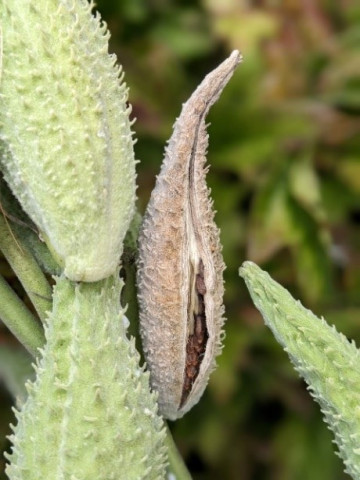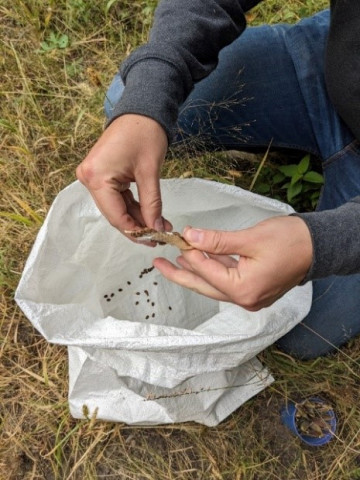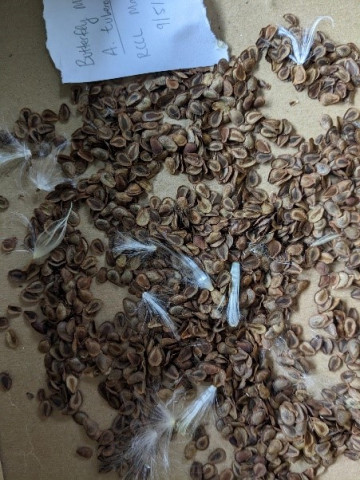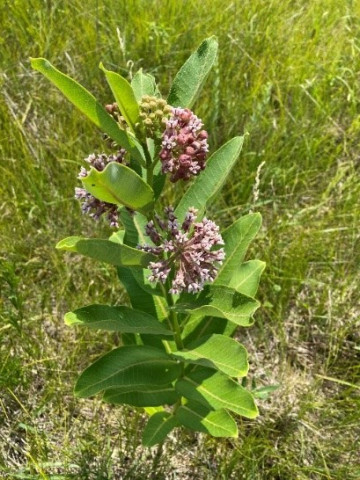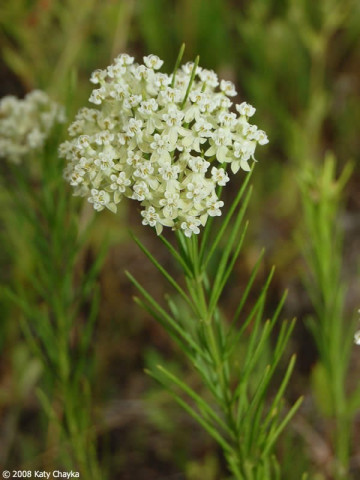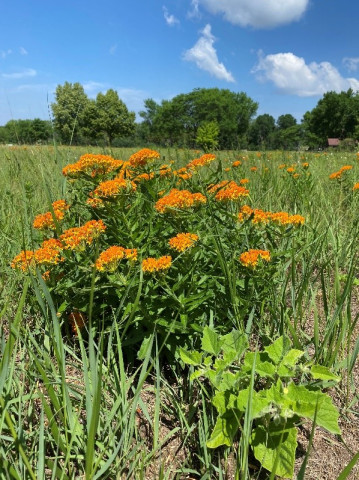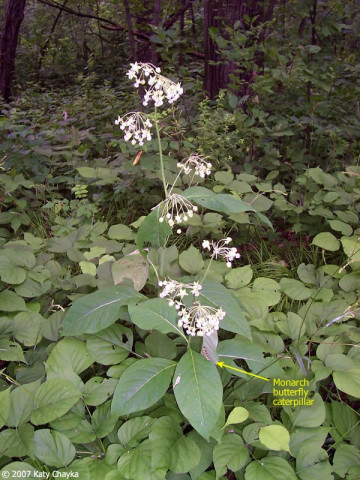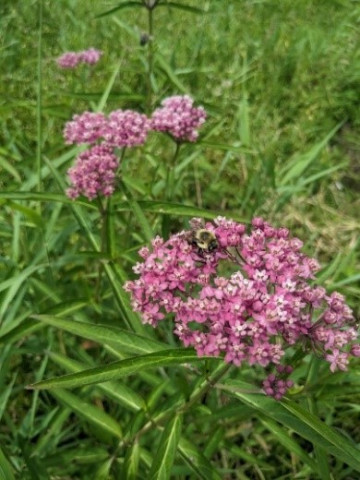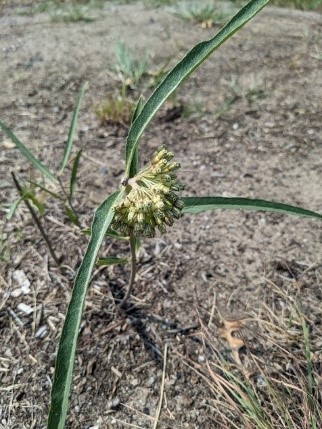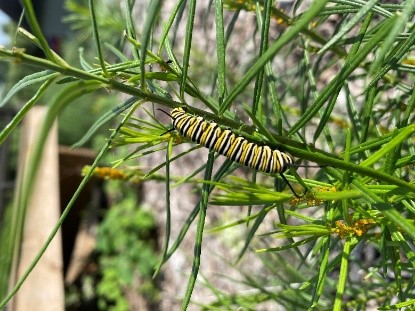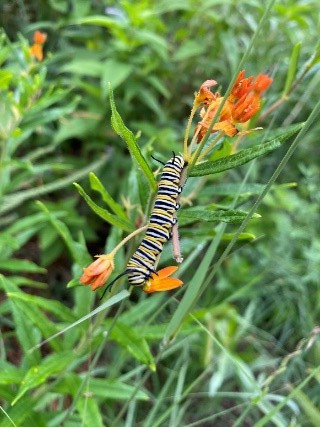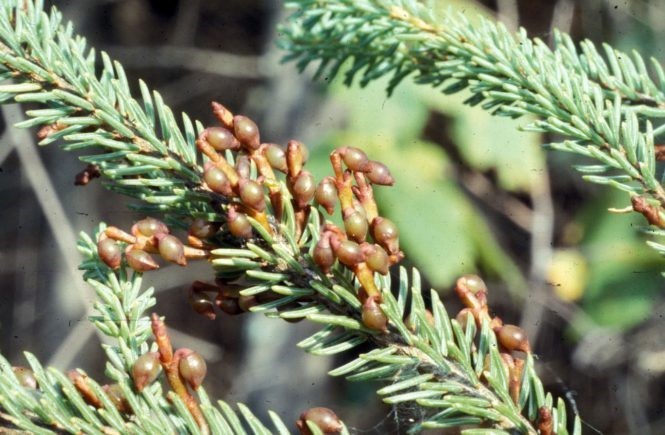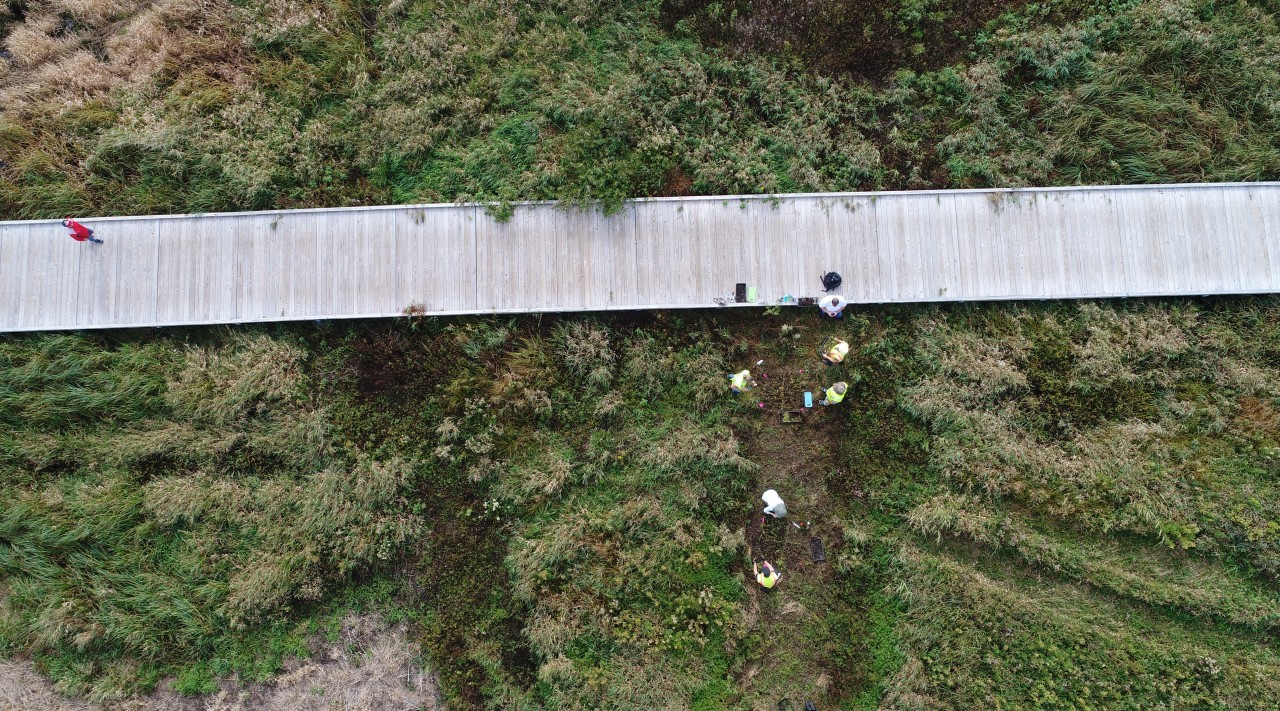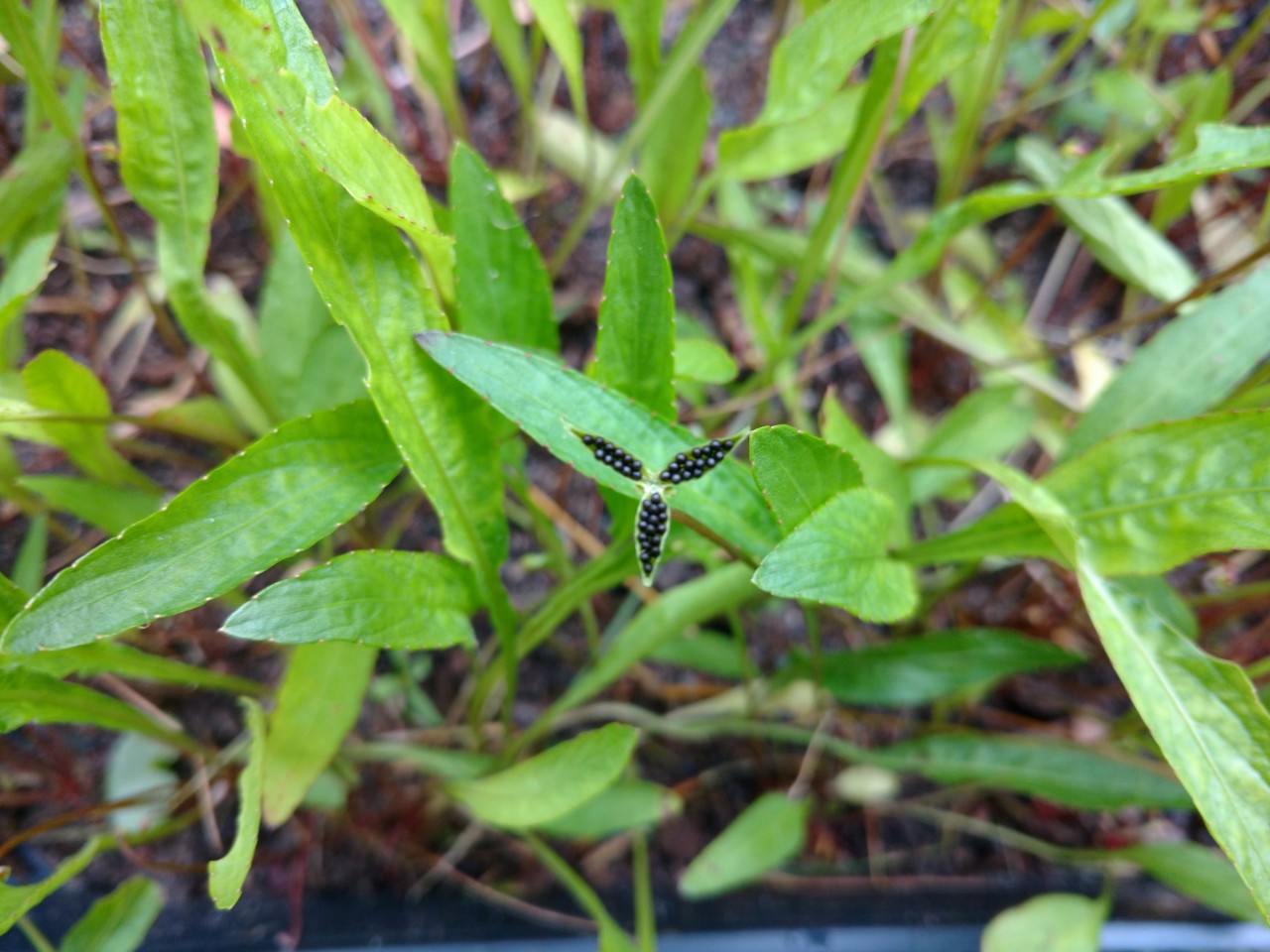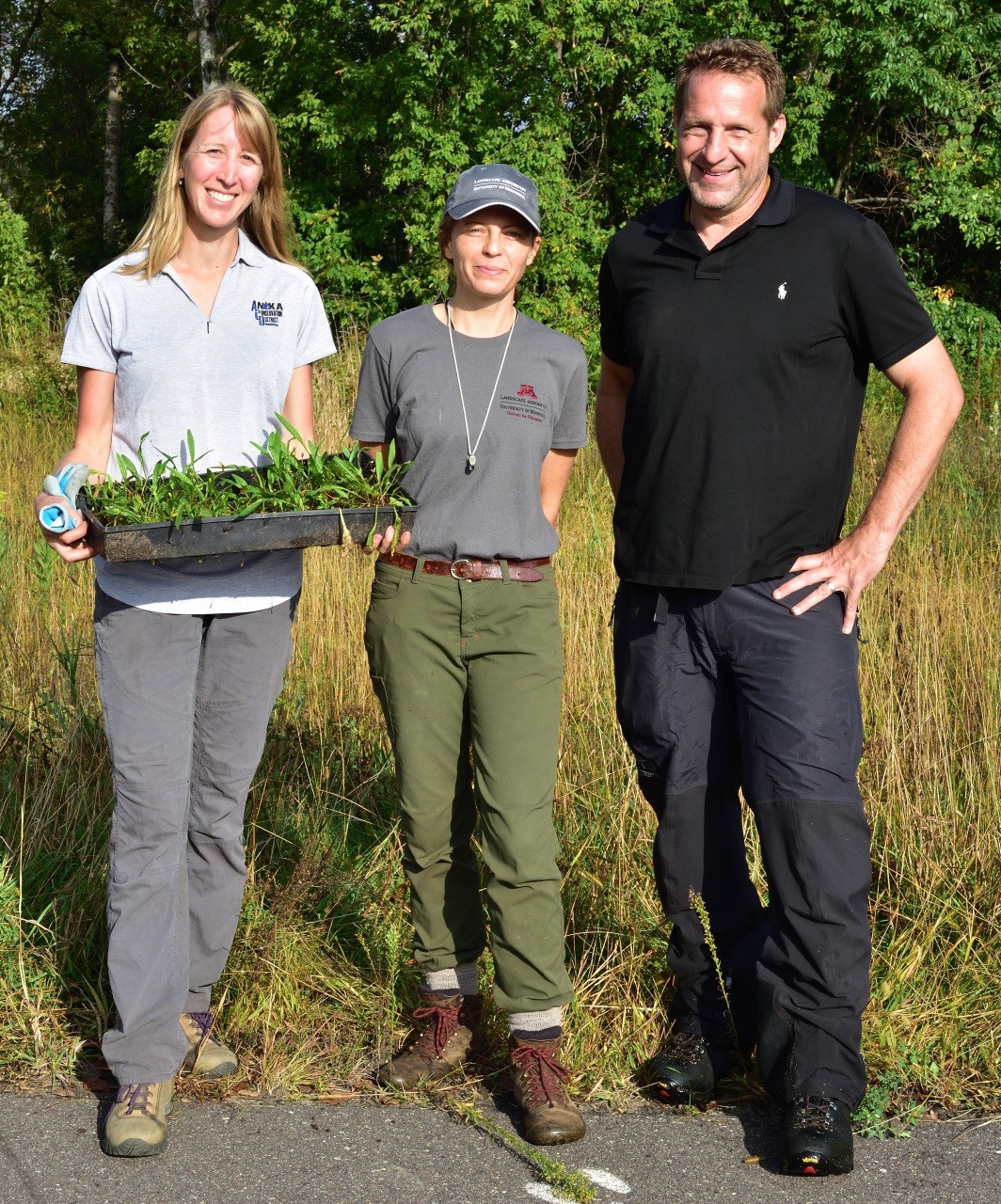Birds-eye view of volunteers planting rare lance-leafed violets at Blaine Wetland Preserve
Anoka Conservation District (ACD) has partnered with the Minnesota Landscape Arboretum (MLA) and Critical Connections Ecological Services (CCES) to salvage thousands of rare lance-leafed violets (Viola lanceolata)—a Minnesota State Threatened species—from permitted construction sites in Blaine, MN. Thanks to the new MN Department of Natural Resources 'Permit for the Propagation of Endangered or Threatened Plants', volunteers and staff from the City of Blaine, ACD, MLA, CCES, and the surrounding community were able to take these rare plants, clean them to remove weed seeds, and then transplant them into the protected Blaine Wetland Sanctuary. The newly planted lance-leaved violet populations will be monitored over time to determine the effectiveness of transplanting.
Opened seed head of the lance-leafed violet (Viola lanceolata)
"Salvaging threatened and endangered plants from development projects where they would otherwise be destroyed provides an important opportunity to explore transplant options and to collect critical information about these rare plants. We aim to develop salvage and management protocols and monitor the efficacy of transplanting rare plants," said Carrie Taylor of the Anoka Conservation District.
"We have seen the destruction of many rare plant populations over the past couple of decades due to development. We are grateful for the MN DNR's new 'Permit for the Propagation of Endangered and Threatened Plants' so that we can move these plants to protected areas and learn how best to manage them," said Chris Lord, of the Anoka Conservation District.
(From left to right) Carrie Taylor, Amanda Weise, and Jason Husveth--architects of the Rare Plant Salvage project
Anoka County is home to many unique habitats and rare species. However, development is rapidly increasing in the County, causing fragmentation of the landscape and threatening rare plant populations. The construction sites received a DNR permit that allows for the 'Take of Endangered or Threatened Species Incidental to a Development Project.' As part of that permit, a compensatory mitigation is paid to fund activities that result in a net-benefit to the species. When the 'taking' or removing rare plants from a development project area is unavoidable, rare plant salvage is an alternative conservation practice undertaken to transplant those plants that would otherwise be destroyed. Jason Husveth, principal ecologist with CCES, credits the developer, The Excelsior Group, for helping to make this happen despite incurring addition time and cost.
While salvage of rare plant species occurs in many states, there is no established process for doing so in Minnesota. Critical Connections Ecological Services, Anoka Conservation District, and the Minnesota Landscape Arboretum are seeking funding to develop an ongoing Rare Plant Salvage Program for Minnesota.
